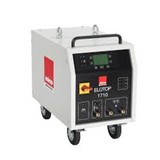PricewaterhouseCoopers
In Forging Ahead: Mergers and Acquisitions Activity in the Global Metals Industry 2005, PricewaterhouseCoopers said that further M&A activity in the sector is likely, and that China will be a significant source of M&As over the next few years as it continues to produce and consume steel at a record pace.
"Our predictions of last year have been borne out, with rampant consolidation in the metals industry and, most specifically, in the steel sector,” said Mark Okes-Voysey, global metals leader, PricewaterhouseCoopers. “The emerging markets were most instrumental in deal-making and we expect that Eastern Europe, Asia Pacific and Latin America will continue to be driving forces in the industry’s consolidation efforts.”
There were 250 metals industry deals in 2005, far surpassing the 166 in 2004. However, the total value of the deals in 2005 was only $35 billion, less than the $37 billion in deals the previous year. The steel sector led the way in 2005 M&A activity in the sector, as it did in 2004, with 165 deals collectively worth $27.4 billion, according to the report.
Domestic transactions accounted for most of the metals industry M&A activity with 151 deals – up from 99 in 2004. However, the aggregate value of these deals was just $17.6 billion, down 32 percent on the $25.7 billion that was traded the year before. Conversely, both the volume of cross-border deals and their aggregate value rose sharply, with 99 transactions collectively worth $17.2 billion – up 50 percent over 2004.
Companies based in Central and Eastern Europe, Asia Pacific and Latin America jointly accounted for $17.7 billion – or 51 percent of the total value of industry transactions worldwide, up from 32 percent the previous year. This trend is expected to continue, given that industrial production in all three regions is growing much more rapidly than it is in North America and Western Europe.
The Steel Sector
In the steel sector, the sharp rise in the number of transactions helped to offset the absence of any deals comparable in size to the two that produced Mittal Steel in 2004. The single biggest deal – Mittal Steel’s acquisition of the Ukrainian steel producer KryvorizhStal – was worth about $4.6 billion, barely a quarter of the $17.8 billion that went into the making of Mittal Steel.
Jim Forbes, global metals advisory leader, PricewaterhouseCoopers, said “Global consolidation is by no means the only factor driving deal-making in the steel sector. Many of the largest deals of 2005 involved manufacturers eager to buy iron ore mines and reduce their raw materials costs.”
The acquisition of KryvorizhStal was one such example, as it produces 17.1 Mtpy of iron ore and has over a billion tonnes of iron ore reserves. Similarly, Ural Steel and Sitbon Investments bought Mikhailovsky, Russia’s second biggest iron ore producer, for about $1.7 billion.
The Aluminium Sector and Other Metals
While the leading steel producers continue to jostle for a larger piece of the global pie, the aluminium sector is already much more consolidated – and relatively calm. There were 41 completed transactions with a total disclosed value of $4.2 billion in 2005, down from the $5.2 billion in 2004. The single biggest deal was the $1.8 billion acquisition of Norwegian metals maker Elkem by Orkla, Norway’s largest consumer-goods company. In January 2005, Orkla increased its existing stake in Elkem above the 40% limit that triggers a mandatory offer. It subsequently bought the rest of the shares, ending a long-running battle with Alcoa for control of the company.
Conversely, companies involved in the production of other base metals were much busier – with 45 deals collectively worth nearly $3.4 billion – seven times more than the $447 million that was transacted in 2004.
China Remains the Key to World Balance
China now produces more crude steel than the next four largest steelmaking nations combined. The central government has signalled its determination to rationalise the sector, with the top 10 domestic producers controlling 50 percent of domestic output by the end of the decade. Its new steel policy, launched in July 2005, has already resulted in eight transactions with an aggregate disclosed value of $1.1 billion – 25 percent of the total value that was traded in the Asia-Pacific metals industry in 2005. China is also attracting great interest from overseas steelmakers eager to tap into its growth potential.
At the same time, China’s steel consumption has quadrupled since 1998, with the construction industry playing a significant role in driving demand. In 2004, it accounted for 53 percent of total consumption, a pattern that is likely to persist for the next few years, as China invests in vast infrastructure projects like the Three Gorges Dam and gears up for the 2008 Beijing Olympics and 2010 Shanghai World Expo.
China’s steel consumption is forecast to rise by 4-5 percent a year for the next few years, significantly outpacing the 3 percent by which consumption is predicted to rise in the rest of the world.
China is heavily reliant on other countries, however, for high-quality iron ore and, as imports have soared, so prices have sky rocketed. Energy and transportation costs have also increased, and the domestic steel sector is highly fragmented and suffering from overcapacity in certain product areas. All these factors have eroded the industry’s profitability – and, if it is to weather such difficulties, it must consolidate.
“The Chinese steel sector is sure to be a significant source of deal-making over the next few years. The central government has made it clear that the industry must consolidate, and that it wants the four leading domestic steelmakers to play a major role in this process. The big foreign steelmakers are equally eager to tap the opportunities China offers; they know that, as China reduces its imports and ramps up its capacity, they will have to improve their ties with domestic producers to cash in on its growth,” said Okes-Voysey.
The First Truly Global Steelmaker?
Meanwhile, Mittal Steel’s hostile takeover bid for rival steel giant Arcelor has sparked interest everywhere. The next chapter of the story should unfold on June 7, 2006, when the European Commission is due to rule on the antitrust implications of the proposed deal. It can either clear Mittal Steel to press on with the bid or subject it to a deeper probe lasting up to four months.







